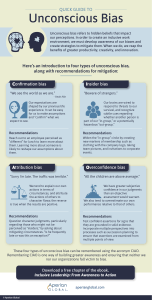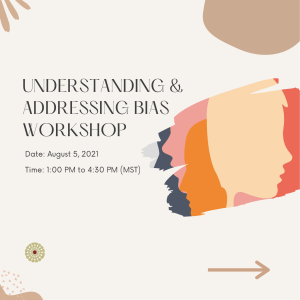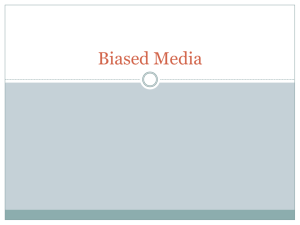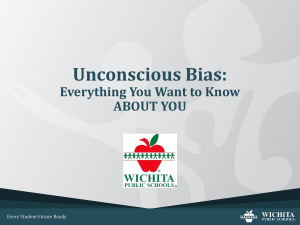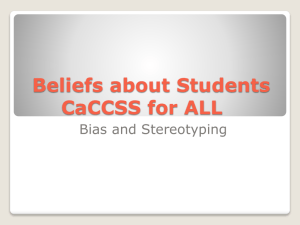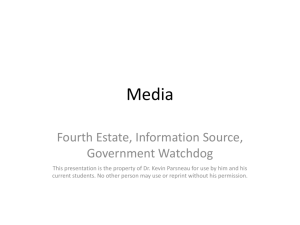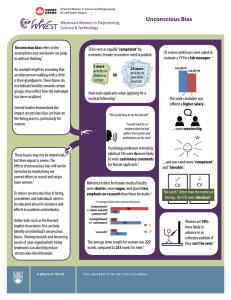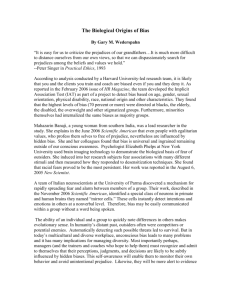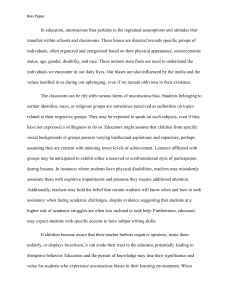Team Building & Diversity Activities for Training
advertisement
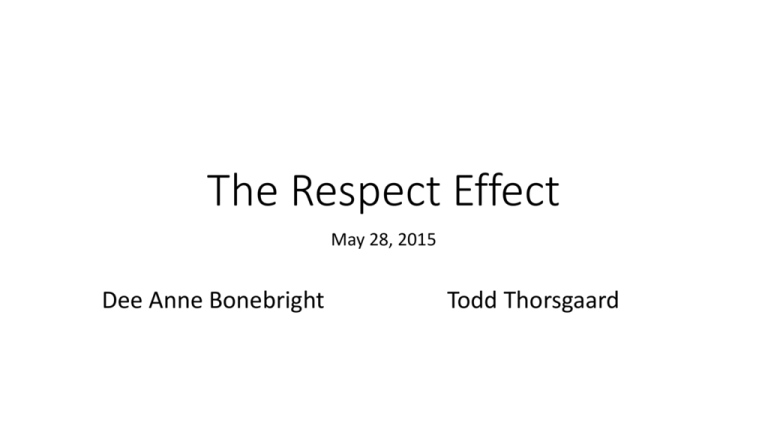
The Respect Effect May 28, 2015 Dee Anne Bonebright Todd Thorsgaard Unconscious Bias Biases are the invisible air we walk through – exerting their influence outside of conscious awareness. Source: Lieberman, Rock, & Cox 2014 Cognitive Shorthand • Use previous knowledge to make decisions Shortsighted Outcomes • Miss new information • Narrow our options Bias Blind Spot • Biases are unconscious • We like being right and they help us • “Most of what goes on in organizations is unintentional” Need To Mitigate – Not Just Educate • More than self-awareness • Group and team processes • Action “In-Group” Bias • Affects how people work together • More similar = Positive perception • Increased interaction and support for in-group How to Mitigate “In-Group” Bias • Find ways to see others who are different from us as also similar • Intergroup interactions • Enhancing communication Elements of Individuality Source: Maria Arocha White, Inclusity Consulting New Definitions “Diversity means to me your background based on your previous work experience, where you were born and raised, and any unique factors that contribute to your personality and behavior.” Source: Millennial survey respondent Deloitte University (2015). The Respect Effect Source: Paul Meshanko Legacy Business Cultures Neuroscience of Respect People can identify another person’s apparent race, gender, and age in a matter of milliseconds. In this blink of an eye, a complex network of stereotypes, emotional prejudices, and behavioral impulses activates. -- Marsh, Mendoza-Denton, & Smith Neuroscience of Respect Why are we able to recognize the human face more easily than any other object? Disrespect = Threat Response • The experience is immediately sent to long-term storage in our brains • Adrenaline and cortisol are increased – when it happens and also when we recall it • Decreases sense of engagement with others, increases stress and stress-related illnesses Respect is… An active process of: • non-judgmentally engaging people • from all backgrounds • to increase my awareness and effectiveness • in a manner that esteems both myself and those with whom I interact 12 Rules of Respect 1. Be aware of your nonverbal and extra-verbal cues 12 Rules of Respect 2. Develop curiosity about the perspectives of others 12 Rules of Respect 3. Assume that everyone is smart about something 12 Rules of Respect 4. Become a better listener by shaking your “but” 12 Rules of Respect 5. Look for opportunities to connect with and support others 12 Rules of Respect 6. When you disagree, explain why 12 Rules of Respect 7. Look for opportunities to grow, stretch, and change 12 Rules of Respect 8. Learn to be wrong on occasion 12 Rules of Respect 9. Never hesitate to say you are sorry 12 Rules of Respect 10. Intentionally engage others in ways that build their self-esteem 12 Rules of Respect 11. Balance Talking and Listening 12 Rules of Respect 12. Smile Self-Assessment Where are you a rock star? What are your learning edges? How can you address them?
